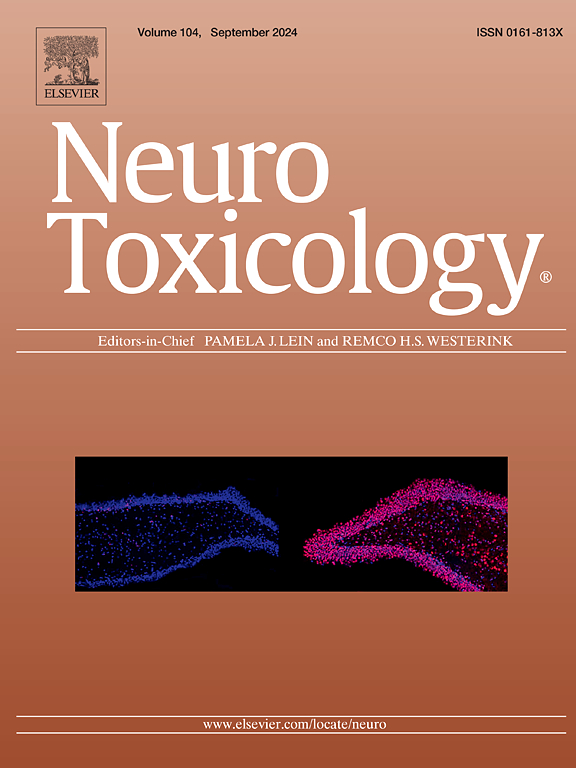Iron species in cerebrospinal fluid and dementia risk in subjects with mild cognitive impairment: A cohort study
IF 3.9
3区 医学
Q2 NEUROSCIENCES
引用次数: 0
Abstract
Background
Iron dysregulation has been implicated in the pathogenesis of dementia, since it is an essential nutrient for neuronal function, but also contributes to oxidative stress and neurotoxicity at elevated levels.
Methods
We enrolled 56 individuals with newly-diagnosed mild cognitive impairment (MCI) and followed over a 47-month period to monitor conversion to dementia according to baseline percentage concentrations of cerebrospinal fluid iron species.
Results
In this cohort, 28 participants developed Alzheimer’s dementia, 5 frontotemporal dementia, 2 Lewy body dementia, and 2 vascular dementia during the follow-up. Higher Fe-Ferritin was associated with a higher though statistically unstable dementia risk (hazard ratio-HR 1.36 for 10-unit % increase, 95 % confidence interval-CI 0.88–2.11), while Fe-Transferrin was linked to a lower risk (HR 0.65, 95 % CI 0.21–2.08) and inorganic Fe showed little association (HR 1.06, 95 % CI 0.80–1.40). Patterns of association were non-linear: inorganic Fe had a U-shaped association, with reduced risk at 25–40 % and increased risk above 45 %; Fe-Ferritin showed an inverted U-shaped relation with higher risk between 10 % and 20 %; Fe-Transferrin showed almost no relation with dementia risk. When considering conversion to Alzheimer’s dementia only, the relation was similarly U-shaped for inorganic Fe and almost null for Fe-Transferrin, while Fe-Ferritin showed a positive relation with risk above 15 %.
Conclusions
Despite the statistical imprecision of the estimates, our study provides novel evidence linking iron species in cerebrospinal fluid to dementia risk in individuals with MCI. These findings also underscore the importance of elemental speciation in dementia research.
轻度认知障碍受试者脑脊液中的铁元素与痴呆风险:一项队列研究
diron失调与痴呆的发病机制有关,因为它是神经元功能的必需营养素,但也有助于氧化应激和高水平的神经毒性。方法:我们招募了56名新诊断为轻度认知障碍(MCI)的患者,并根据脑脊液铁离子的基线百分比浓度随访了47个月,以监测向痴呆的转化。结果随访期间,28名受试者出现阿尔茨海默氏痴呆、5名额颞叶痴呆、2名路易体痴呆和2名血管性痴呆。高铁-铁蛋白与较高的痴呆风险相关,但在统计上不稳定(风险比- 1.36,增加10个单位%,95 %可信区间-CI 0.88-2.11),而铁-转铁蛋白与较低的风险相关(风险比0.65,95 % CI 0.21-2.08),无机铁几乎没有关联(风险比1.06,95 % CI 0.80-1.40)。关联模式呈非线性:无机铁呈u形关联,25-40 %的风险降低,45 %以上的风险增加;铁-铁蛋白在10 % ~ 20 %之间呈倒u型关系;铁转铁蛋白与痴呆风险几乎没有关系。当仅考虑转化为阿尔茨海默氏痴呆症时,无机铁的关系类似于u型,铁转铁蛋白几乎为零,而铁转铁蛋白与风险呈正相关,高于15% %。结论:尽管统计估计不准确,但我们的研究提供了新的证据,证明脑脊液中的铁与轻度认知障碍患者痴呆风险有关。这些发现也强调了元素物种形成在痴呆症研究中的重要性。
本文章由计算机程序翻译,如有差异,请以英文原文为准。
求助全文
约1分钟内获得全文
求助全文
来源期刊

Neurotoxicology
医学-毒理学
CiteScore
6.80
自引率
5.90%
发文量
161
审稿时长
70 days
期刊介绍:
NeuroToxicology specializes in publishing the best peer-reviewed original research papers dealing with the effects of toxic substances on the nervous system of humans and experimental animals of all ages. The Journal emphasizes papers dealing with the neurotoxic effects of environmentally significant chemical hazards, manufactured drugs and naturally occurring compounds.
 求助内容:
求助内容: 应助结果提醒方式:
应助结果提醒方式:


